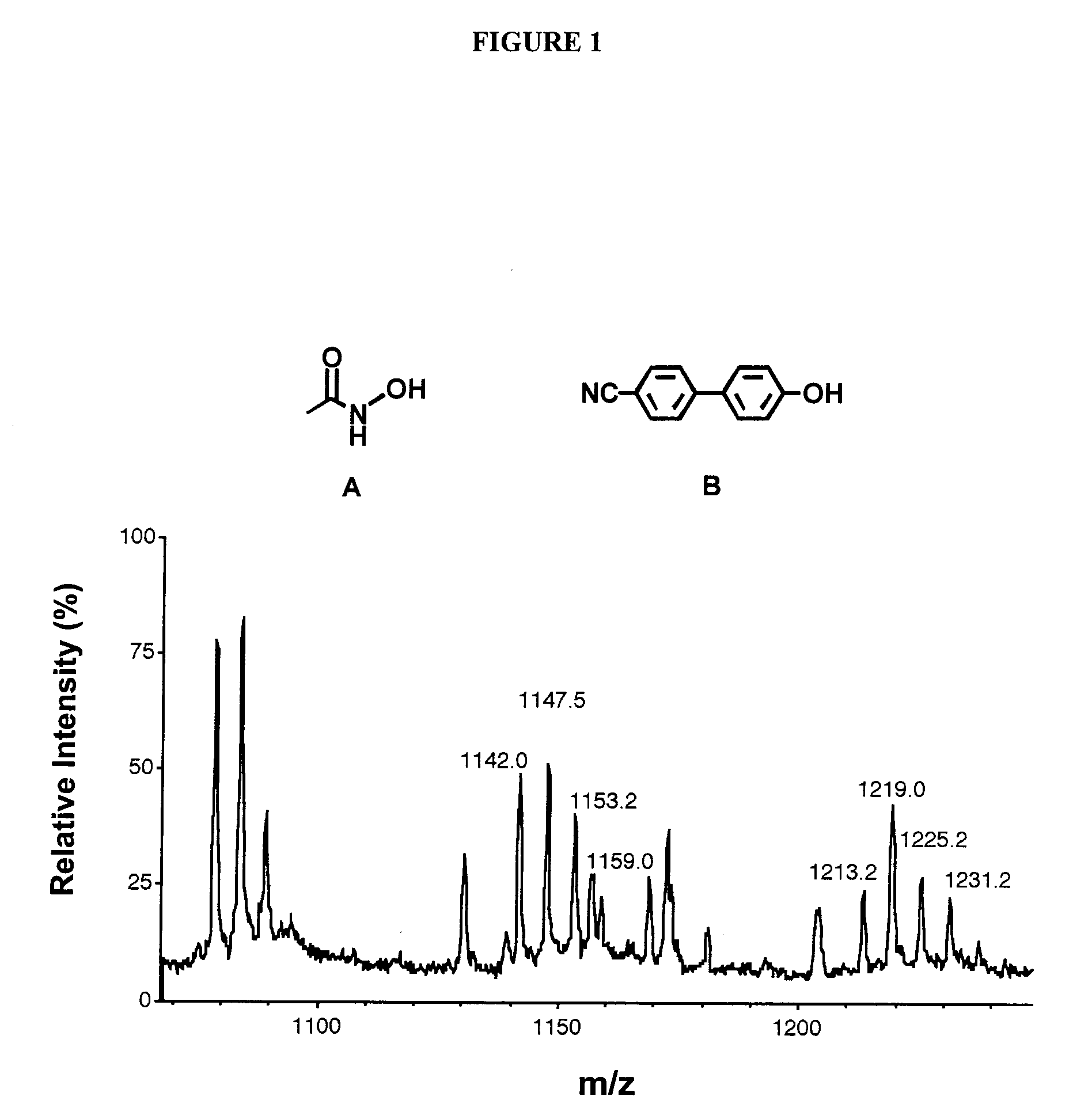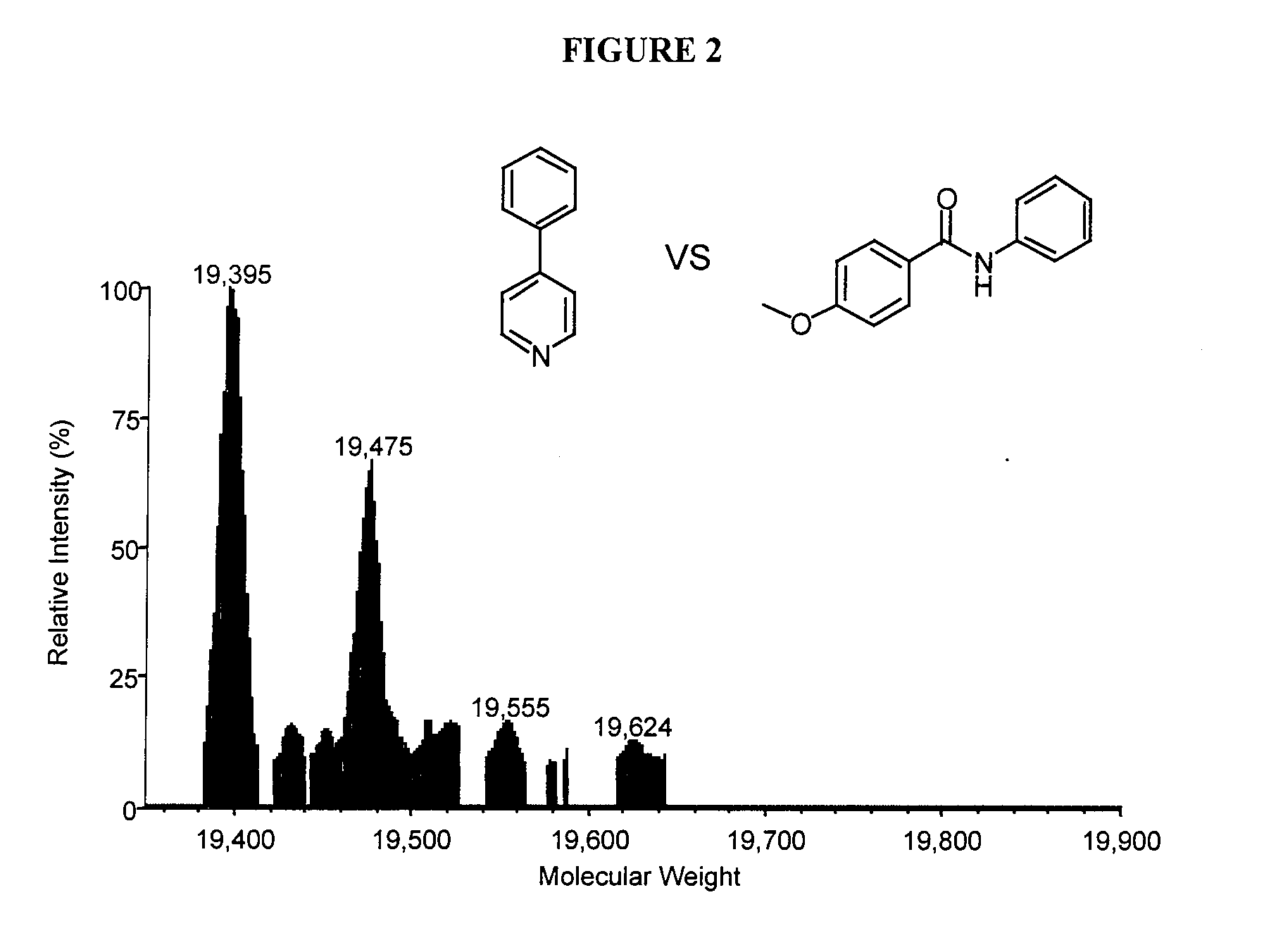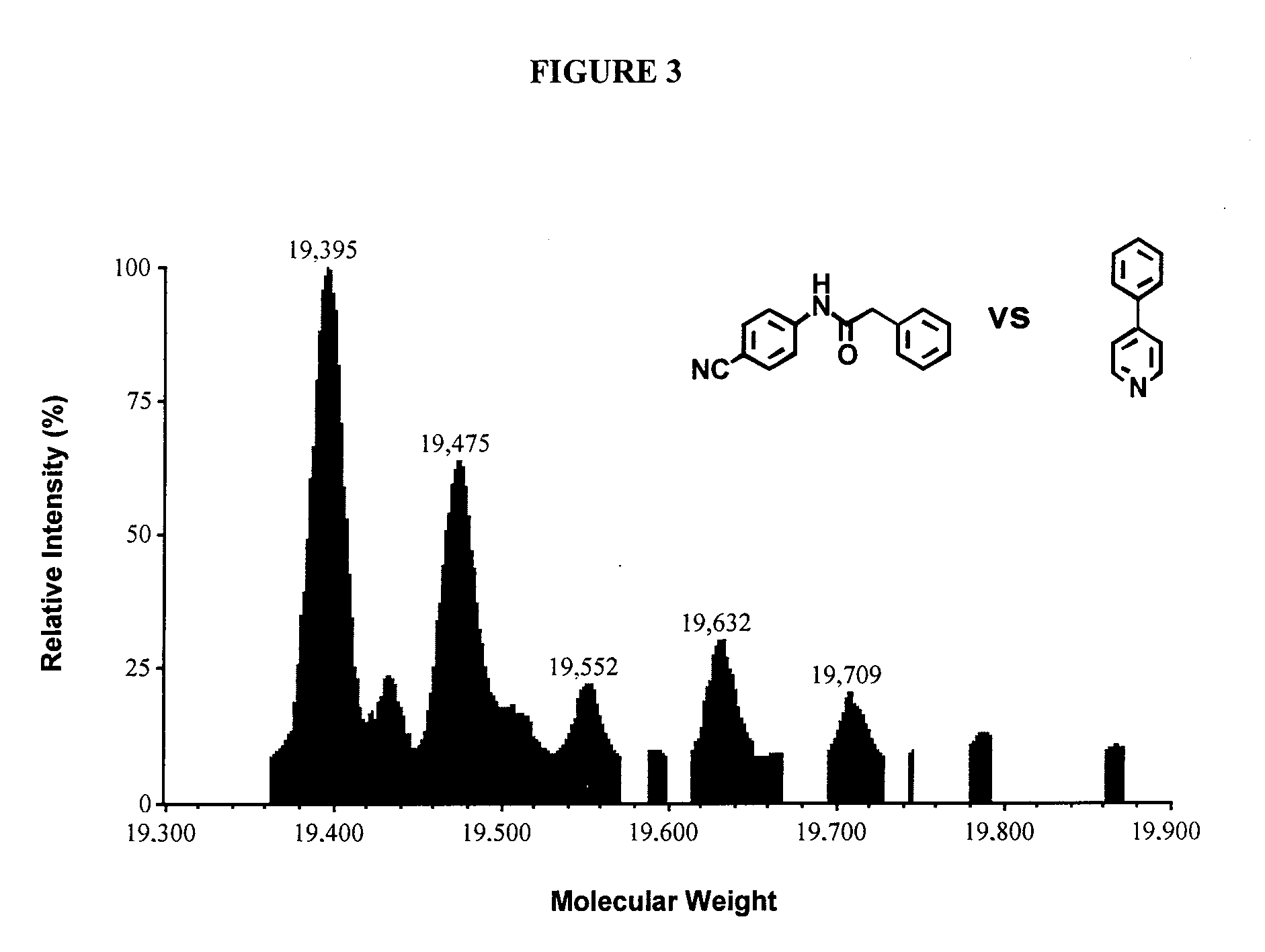Identification of non-covalent complexes by mass spectrometry
- Summary
- Abstract
- Description
- Claims
- Application Information
AI Technical Summary
Benefits of technology
Problems solved by technology
Method used
Image
Examples
embodiment
Deconstructive Embodiment
[0087] According to one embodiment of the invention (a deconstruction embodiment), at least a portion of the candidate target binding ligands are identified by considering a parent molecule, e.g. an existing drug or drug lead molecule, as a collection of stable fragment molecules and testing the binding of the stable fragment molecules to a target biomolecule (e.g., protein, nucleic acid, etc.) by determining, with mass spectrometry, the ability of each stable fragment molecule to compete for binding with the parent molecule, the stoichiometry of the binding of the parent molecule and stable fragment molecule, and the binding affinities of the parent and stable fragment molecule with the target molecule. Competition of the stable fragment molecules (alone or in combination) with the parent molecule is studied to determine which fragments play a role in the binding of the parent molecule to the target.
[0088] Competitive binding of a target biomolecule with l...
constructive embodiment
[0105] In the case of novel targets with no known parent drug or drug lead molecules, the method of the invention permits rapid identification of molecules that bind to a target, even a novel target. The molecules can then be assayed with the target, e.g., in vivo, in vitro, ELISA or cell-based assay, to determine biological activity.
[0106] The method of the invention permits the rapid identification of molecules that bind to a target biomolecule when there is no parent molecule from which to design stable fragment molecules by the optional pre-screening process described above. Target binding ligands that have detectable binding can be re-assayed using mass spectrometry for their ability to compete with each other for a common target biomolecule binding site. Those candidate target binding ligands that compete with each other for a single site are defined as a set of target binding ligands as above. Two or more ligands from distinct sets or from the same set of target binding liga...
example 1
[0111] Stromelysin is a member of zinc-dependant enzymes known as matrix metalloproteinases (MMP). Matrix metalloproteinases are important for connective tissue remodeling or breakdown. Increased levels of MMP activity have been implicated in a number of diseases such as rheumatoid arthritis, cancer, and corneal ulceration. This makes stromelysin an attractive target for small molecule inhibitors.
[0112] There have been a number of reports on inhibitors for stromelysin. Haiduk et al (1997); Olejinczak et al (1997). NMR and 15N labeled stromelysin in the presence of saturating amounts of acetohydroxamic acid has been used to identify ligands that bind in the S1′ site of stromelysin. The ligands were optimized by modifying their structure and measuring the affect the modifications had on their dissociation constants by NMR. The three-dimensional structure stromelysin with 4-phenylpyridine was solved. Using this NMR method, the hydroxamic acid moiety and the optimized biphenyl ligand w...
PUM
| Property | Measurement | Unit |
|---|---|---|
| Molar density | aaaaa | aaaaa |
| Ratio | aaaaa | aaaaa |
| Biological properties | aaaaa | aaaaa |
Abstract
Description
Claims
Application Information
 Login to View More
Login to View More - R&D
- Intellectual Property
- Life Sciences
- Materials
- Tech Scout
- Unparalleled Data Quality
- Higher Quality Content
- 60% Fewer Hallucinations
Browse by: Latest US Patents, China's latest patents, Technical Efficacy Thesaurus, Application Domain, Technology Topic, Popular Technical Reports.
© 2025 PatSnap. All rights reserved.Legal|Privacy policy|Modern Slavery Act Transparency Statement|Sitemap|About US| Contact US: help@patsnap.com



